Swimming conditions on Lake Ontario can be unpredictable and may have serious hazards, such as rip currents and high waves. Learn about water safety to stay safe while having fun at the beach.
Know the Flags
Lifeguards use a flag system adopted by the International Lifesaving Federation to identify swimming conditions and designated swimming areas. Flag colours can change multiple times throughout the day. Before entering the water, check the flag colour on the back of the lifeguard stand.
Green Flag
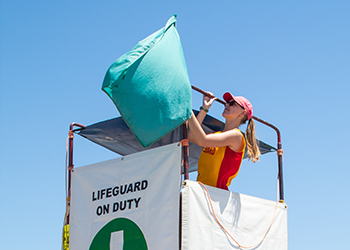
Good conditions; little to no waves and off-shore wind.
Yellow Flag
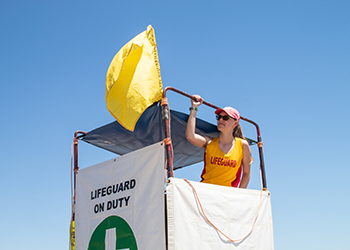
Moderate conditions; strong waves and off-shore wind, light fog.
Red Flag
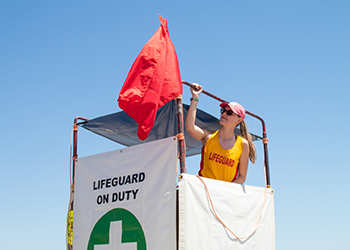
High hazard conditions; high waves, strong currents and off-shore winds, heavy fog and unsafe beach water quality. All swimmers are discouraged from entering the water.
Red Over Yellow Flag
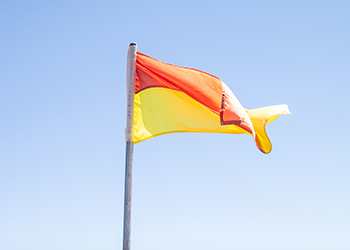
Designated swimming area. Placed on land, the space between two of these flags indicate the designated area most closely supervised by lifeguards and where swimming is allowed.
No Flag
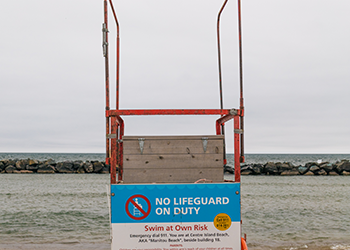
No lifeguards on duty. Swimming is not recommended.
Personal Safety
Learn how to reduce the risks so you and/or your family can enjoy swimming.
- Stay within arm’s reach of children.
- Never swim alone – always swim with a buddy. The person you are with may be your only lifeline for help.
- Swim between the flags. This area is closely monitored by lifeguards.
- Check the beach water quality and weather conditions. Swimming during and 48 hours after rainfall is not recommended.
- Swim sober. Do not enter the water or go swimming while under the influence of alcohol or drugs.
- Protect your neck. Reduce the risk of head injuries by entering unknown water feet first.
- Wear a lifejacket or personal flotation device.
- Be sun safe. Wear sunscreen with SPF 30 or higher, apply every two hours and reapply before and after swimming.
- Always read and obey all posted signs. Lake conditions can change quickly and the absence of a particular sign does not mean there is no threat to personal safety.
- Beware of rip currents. Rips currents are stronger in wavy conditions and often develop next to rock formations. Float with the rip, and swim parallel to shore – do not try to swim against it.
When in doubt, talk to a lifeguard and ask them about the swimming conditions and if there are any hazards that you should be aware of.
Watercraft
All watercraft operators including boats, personal watercraft (PWC) and paddle crafts need to take precautions when operating near a supervised swimming beach.
- Boats, PWC and paddle crafts are not permitted to enter or remain in the designated swimming area.
- Slow your speed and exercise caution. Swimmers may be outside of the designated swimming area and can be tough to see.
- Be aware of the wake from your boat. Nearby swimmers and other small craft may be overwhelmed by the waves.
Learn more about boating safety in Canada.





